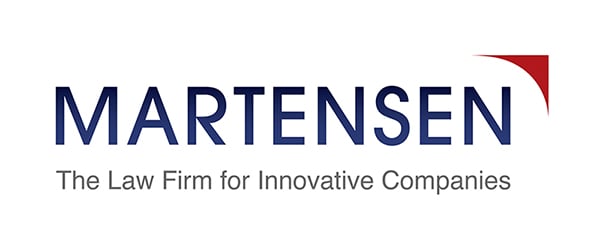Know And Protect Your Intellectual Property – Part 2
In the previous article, we discussed the basics of intellectual property (IP), starting with the “what / why / how” aspects of IP: What is it? Why should I care about it? How do I identify it? This article progresses toward the ultimate goal of this series – namely, to provide an understanding of how to effectively protect the IP that should be protected. This segment also assumes an understanding of the importance of protecting IP as well as an understanding of how to identify IP. Review Part 1, if needed, for details about these areas (Know and Protect Your Intellectual Property – Part 1).
In Part 2, we’ll focus on the question, “How do I valuate my various IP assets?” At the outset, we recognize you likely already appreciate the difficulty of answering this question from first-hand experience. IP valuation is a complex, multivariable task and an industry unto itself. That said, this task is not impossible and can be approached from a number of ways, as we now discuss.
PART 2: EVALUATE YOUR IP.
Even after appreciating the fact that IP is valuable, and after identifying the IP you think might be important to your company, you still must decide what, if anything, you’re going to protect. IP values vary across a wide range, according to the IP itself, with the spectrum spanning from exceedingly valuable IP to IP that is virtually worthless. Google’s foundational page-ranking patents are among the former type. Expired patents and overly-diluted trademarks (think “jetski,” “jacuzzi,” “onesie,” “zipper,” or any of the host of now-generic marks) rank among the latter. Thus, from a practical standpoint, you must at least assign relative rankings to the IP assets within the portfolio you’ve identified from Part 1.
But relative valuation isn’t enough. You must also determine at least a “rough-order-of-magnitude” actual valuation for each IP asset. Otherwise, how will you know how much you should allocate toward protecting that IP? For example, if a particular IP asset is an invention with a current estimated value of $5 million and it is sold worldwide, spending $50K in the U.S. and $100K abroad to gain patent protection makes a lot of sense. In contrast, IP protection for a minor modification to “old technology” (e.g., expired-patent technology) to allow a very narrow, low-cost user segment to connect to “current technology” should not justify such large amounts.
The Many Ways to Gauge IP Value
A number of methods can be used to assess the value of your IP. Keep in mind, however, that all of them are “flawed” in the absolute sense, because each has its own strengths and weaknesses. None will render “the” answer you’re looking for. Even so, you can get a pretty good picture of your IP’s worth by reviewing it through multiple valuation lenses for a reasonable overall valuation estimate.
The first valuation method is simply the brute-force, cost-based method of asking how much a company spent, in aggregate, to secure its IP. This answer provides at least a baseline valuation of that IP. Though simple, this method is substantially incomplete. Reason: Companies spend money on IP with the expectation it will significantly enhance their market value. By its very nature, valuable IP should increase a company’s net worth through its “IP multiplier.” Accordingly, while the cost method does provide basic IP valuation data, it doesn’t fully address the fundamental question of what that IP is really worth to the company. A similar take on this method – the so-called “present-value cost method” – asks how much it would cost the company to replace its IP today. Though more helpful, this variation still doesn’t fully address the issue.
A better use of the cost-based method is to ask how much a competitor would have to spend in today’s dollars to acquire or develop an IP portfolio similar to that of the company. While this, too, is imprecise, it provides a better guide by viewing the IP’s valuation through a competition-focused lens. In ideal cases, the target competitor simply cannot circumvent the IP (e.g., a sound reputation as symbolized through a trademark, a strong network of patents, etc.), making such IP even more valuable. This IP can be coarsely valuated by viewing the cash flows of the two companies and making the assumption that the value of the IP accounts for the lion’s share of that difference. This model works only if both revenue streams can be accurately estimated and only if both streams reside solely within the same or similar market spheres. It also works only to the extent the assumption – that IP value represents the primary difference between the two companies’ revenue streams – is valid. That’s a lot of “ifs.” Nonetheless, to the extent these conditions are satisfied, this method provides a good approximation of the IP’s market valuation.
Another method is simply looking at comparable IP in the marketplace and determining what it is worth. This has the advantage that a company doesn’t have to “reinvent the wheel” to determine its IP’s worth. The company can simply estimate the IP’s value based on similar IP. The problem with this method is that “similar” may not be similar enough, and an apples-to-apples comparison may not be possible. Still, if a company’s IP is similar enough to other IP, this can be a very low-cost, efficient way to value it. This works particularly well with certain patents – those whose innovative features are “add-ons” to existing technologies – in which the value of the benefit provided by “new” features of the patent (those that would be infringed by a competitor in the commercial marketplace) can be estimated by comparing them to non-infringing alternatives or aggregate values of the alternatives, taken as a whole. However, if the aggregate values are determined to be synergistic or if they cannot be easily segregated for analysis, this method, too, becomes problematic.
Yet another method is to look at the cash flow generated by the IP. This works well if the IP can be tied directly to that cash flow. The IP’s value is simply the aggregate value of the cash flows estimated to be generated over time, discounted using time-value-of-money calculations to the so-called “present value.” As you have likely inferred, though, this method isn’t effective if the IP is embedded as a mere part of the cash flow, with other related IP (or other products or services) that cannot easily be segregated for an accurate IP-derived assessment.
As should be apparent, none of these valuation methods is perfect. Each depends on how closely the data and circumstances adhere to the particular model and each method has its strong points and limitations. Still, framing an IP value hierarchy as well as estimating the value of each IP asset within that hierarchy is important to determining whether you should protect a particular asset. Doing so leads to the ultimate question in this series, “How much should we spend on protecting each IP asset and what kind of protection should we use for it?” We’ll answer both of these questions – how and how much – in the next segment, PART 3: PROTECT YOUR IP.



